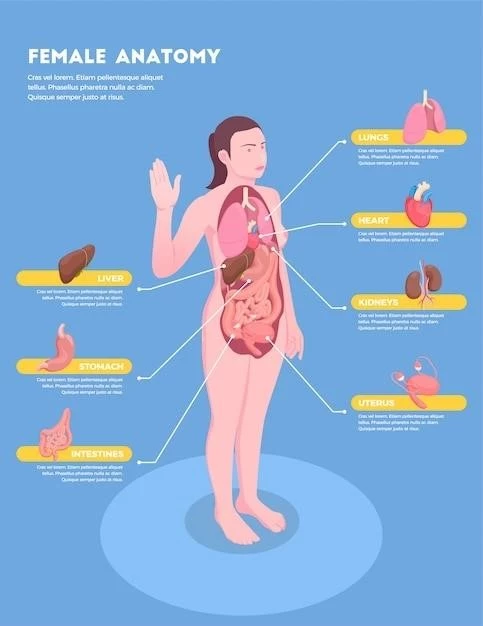Comprehensive Plan on Various Types of Vasculitis
Vasculitis⁚ Causes and Risk Factors
Natural Remedies for Beurgers Disease
Latest Research on Granulomatosis with Polyangiitis
Understanding Temporal Arteritis
Temporal arteritis, also known as giant cell arteritis, is a condition that involves inflammation of large and medium arteries, particularly the temporal arteries. This condition can lead to symptoms such as severe headaches, jaw claudication, vision changes, and even blindness if not promptly treated.
The exact cause of temporal arteritis is unknown, but it is believed to involve a misguided immune response targeting blood vessel walls. Diagnosis typically involves a thorough medical history, physical examination, blood tests to check for inflammation markers, and a biopsy of the temporal artery;
Treatment for temporal arteritis usually involves high-dose corticosteroids to help reduce inflammation and prevent complications. Early detection and prompt treatment are crucial in managing this condition and preventing serious complications such as vision loss. Regular monitoring by healthcare providers is essential to adjust treatment as needed and monitor for any potential side effects of long-term corticosteroid use.
Treatment Options for Giant Cell Arteritis
Giant cell arteritis, a form of vasculitis affecting medium and large arteries, requires prompt treatment to prevent serious complications such as vision loss. The primary treatment for giant cell arteritis involves corticosteroids to reduce inflammation and suppress the immune response.
In some cases, other medications may be prescribed alongside corticosteroids, such as immunosuppressants like methotrexate or tocilizumab. These medications help to further control the immune response. However, the use of these additional medications may vary based on individual patient factors and the severity of the condition.
Regular monitoring by healthcare providers is essential to assess the response to treatment, monitor for any side effects, and make adjustments as needed. It is important for patients with giant cell arteritis to follow their prescribed treatment plan diligently and attend follow-up appointments to ensure the condition is well-managed.
Symptoms of Takayasu Arteritis
Takayasu arteritis is a rare type of vasculitis that primarily affects the aorta and its main branches. The symptoms of Takayasu arteritis can vary depending on which arteries are involved and the extent of inflammation. Common symptoms may include⁚
- Persistent fatigue
- Muscle and joint pain
- Weak or absent pulses in the limbs
- High blood pressure
- Chest pain or shortness of breath
- Dizziness or lightheadedness
- Vision problems
It is important to note that some individuals with Takayasu arteritis may not experience any symptoms in the early stages of the disease, making diagnosis challenging. If left untreated, Takayasu arteritis can lead to serious complications such as stroke, heart failure, or aneurysm formation. Timely diagnosis and appropriate management are crucial in improving outcomes for individuals with Takayasu arteritis.
Diagnosis of Polyarteritis Nodosa

Diagnosing Polyarteritis Nodosa (PAN) involves a combination of medical history assessment, physical examination, imaging studies, and specific tests. Healthcare providers may consider the following diagnostic approaches⁚
- Physical Examination⁚ Healthcare providers may look for signs of inflammation, such as skin ulcers, muscle weakness, or nerve damage.
- Blood Tests⁚ Lab tests can help detect markers of inflammation, such as elevated levels of C-reactive protein (CRP) or erythrocyte sedimentation rate (ESR).
- Imaging Studies⁚ Techniques like angiography or ultrasound can reveal abnormalities in blood vessels.
- Biopsy⁚ A tissue sample from an affected organ may show characteristic changes associated with PAN.
Diagnosing PAN can be complex as it may mimic other conditions, necessitating a multidisciplinary approach involving rheumatologists, dermatologists, and other specialists. Early and accurate diagnosis is crucial to initiate appropriate treatment and prevent complications associated with PAN.
Managing Kawasaki Disease in Children
Kawasaki Disease is an acute febrile illness that primarily affects young children. Managing Kawasaki Disease involves a multi-faceted approach to reduce inflammation, prevent complications, and support the child’s recovery. Key aspects of managing Kawasaki Disease include⁚
- Medical Treatment⁚ Initial treatment often involves intravenous immunoglobulin (IVIG) and aspirin to reduce inflammation and prevent coronary artery complications.
- Monitoring⁚ Regular check-ups and cardiac evaluations are essential to monitor heart function and assess for any coronary artery abnormalities.
- Symptom Management⁚ Managing symptoms such as fever, rash, and irritability to improve the child’s comfort during the acute phase of the illness.
- Follow-up Care⁚ Long-term monitoring is necessary to detect and address any potential cardiac issues that may arise even after the initial acute phase has resolved.
Early recognition and treatment of Kawasaki Disease are critical in reducing the risk of coronary artery complications. A coordinated effort involving pediatricians, cardiologists, and other healthcare professionals is vital in ensuring the best possible outcomes for children with Kawasaki Disease.
